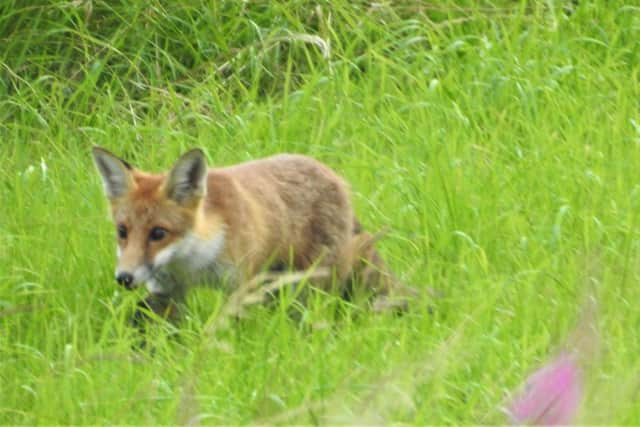Wildlife: The star performer of the day for me was in fact a young fox
and live on Freeview channel 276
Some highlights were huge numbers of dragonflies in the deep ditches and drains that remain as markers of human impact over recent centuries.
A brown hare scampering out of an arable field and then zigzag running down the lane was good and was followed by a roebuck watching us across an area of colourful conservation grassland. Once we had got too close then he was off and bounding through the taller vegetation of the field beyond.
Advertisement
Hide AdAdvertisement
Hide AdDoubling back, he crossed the lane and leapt the deep ditch to make his escape into a neighbouring field and a sense of security. This was a day of searing heat and parched earth in this once great wetland.


The ‘new’ River Ancholme was cut in the mid-to late 1600s and runs straight through the still-existing meanders of the old river.
From deep in the Lincolnshire heartlands near Market Rasen the modern river heads straight as a die due north to the great Humber Estuary. We have a vision of a wetter and wilder Ancholme Valley but that is another story.
The star performer of this day, with a family of common buzzards circling overhead and calling loudly, was in fact a young fox. It saw us as we saw it, and it paused, stopped, and stared at us.
Advertisement
Hide AdAdvertisement
Hide AdThen after what seemed quite a while the fox tensed and dropped down with its attention not now on us but on something far more interesting – lunch. It had clearly seen or heard something just a little way down the track in front of it.
Crouching low it edged forwards and then like a shot from a gun it pounced. Through the longer grass, I could discern the shape of the fox and as it sped away. It was burdened down with a large object, presumably a successful ‘kill’, perhaps a pigeon.
Professor Ian D. Rotherham, researcher, writer & broadcaster on wildlife & environmental issues, is contactable on [email protected] ; follow Ian’s blog (https://ianswalkonthewildside.wordpress.com/ ) and Twitter @IanThewildside